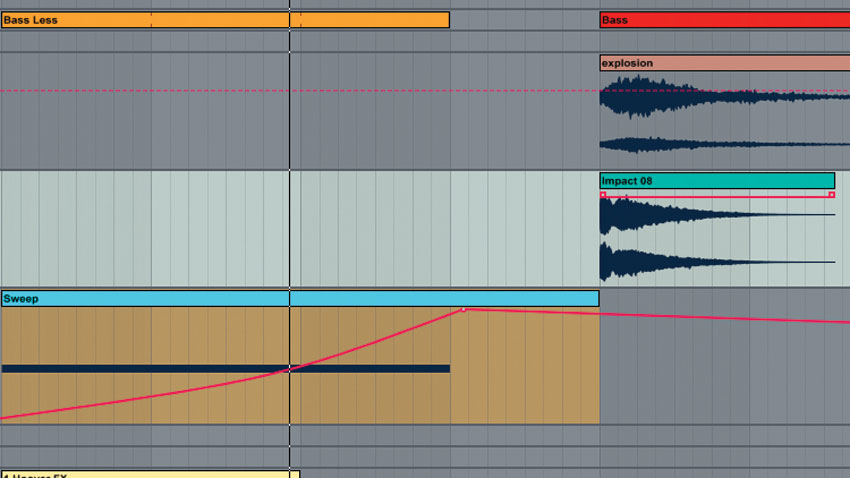7 essential transition techniques explained
Merge seamlessly from section to section of a track with these key techniques

Broadly speaking, a musical transition is an event used to segue between two different sections of a track. Sometimes, two song sections will easily go together in a very natural way, but other times, you may find the transition unexciting or perhaps a bit jarring. Here, we'll look at seven proven ways to add excitement to your transitions where needed and make them flow smoothly.
Our suggestions here are merely starting points to get you inspired: it's best to find your own preferred transitional techniques that fit your style of music best. Plus, don't be afraid to combine several tricks at once if the situation requires it. And finally, note that often the most effective transition is one that simply jolts in without any additional fills or effects.
For more arrangement advice, check out the full How to arrange the perfect track feature in the May issue of Computer Music (CM229).

1. High gloss
Sound FX, cymbals, rises, glissandos and other non-musical elements can be used to gloss over what might be a fairly unremarkable change in an arrangement. These add a sense of forward motion and progression by essentially 'resetting' the listener's ear. Thin, bright, evolving sounds work best for this purpose - hence the popularity of the 'white noise sweep'.

2. Mind the gap
Silent gaps are always a winner, as they grab attention and also work as a sort of 'reset' for the listener. Try cutting out all track elements at the very end of a 16-bar section before slamming back in with the new section - or subvert the tried-and-tested by adding the gap at the start of a section instead of the end. This trick works particularly well in combination with other transitional techniques.

3. Seriously, mind the gap
Adding a silent gap can alter your musical structure in an interesting way. For example, as you begin the silence at a different point within a riff or chord sequence, it may give a different musical effect that is more effective - a better chord transition, say. If it's suitable for the genre, you may also try a silent gap that plays with timing - staying quiet for an unexpected extra beat, for example.

4. Let it hang
Instead of reducing the entire track to silence at the end of a phrase, try removing all elements except for one particular key sound. This trick is often used in hip-hop genres to grab the listener's attention and allow a key vocal phrase to stand alone for a beat or two, giving even more impact when the rest of the parts slam back in again.
Want all the hottest music and gear news, reviews, deals, features and more, direct to your inbox? Sign up here.

5. Let it hang
Instead of taking elements away at the end of a phrase, use different chords, transpositions, or a short musical 'turnaround' to bridge the gap. This could replace the last few notes/bar of your phrase, or even be inserted as an extra bar if you're feeling adventurous. If your main hook is taken from a long sample, you could try using a so-far-unused section of the sample as a special 'fill' section.

6. Shock tactics
Either used on its own or in conjunction with the previous tip, another popular turnaround trick involves the use of a rhythmic event - usually a drum fill or roll - to build up to a significant compositional change. The sudden burst of intensity heavily suggests that a change is imminent, but be aware that the overuse of fills can lessen their impact - don't overdo it!

7. Work those assets
Your core 'hook', lead line or vocal can be turned into a powerful tool for introducing different sections of the track. For example, solo the first word or line of the vocal when it enters, for an ear-catching turnaround. Or have the vocal come in a bit earlier than the main chorus section to hint or lead into it, using chops, stutters or the ol' 'reverse reverb' trick.
Computer Music magazine is the world’s best selling publication dedicated solely to making great music with your Mac or PC computer. Each issue it brings its lucky readers the best in cutting-edge tutorials, need-to-know, expert software reviews and even all the tools you actually need to make great music today, courtesy of our legendary CM Plugin Suite.
